Slip-and-Fall Accident Attorney in Dallas

When you suffer injuries from a slip-and-fall accident, the physical pain and emotional trauma can be overwhelming. At Ax Injury Law, our experienced slip-and-fall accident attorney in Dallas understands the challenges you face. As a trusted law firm serving Dallas residents, we’re committed to helping victims secure the full and fair compensation they deserve.
When you experience a slip-and-fall incident, the consequences can extend far beyond the immediate injury. Medical bills pile up, lost wages create financial strain, and the path to recovery can seem daunting. That’s why having a knowledgeable slip-and-fall attorney by your side is crucial.
Our legal team specializes in helping fall accident victims navigate the complex legal process while protecting their rights. Call us for a consultation: 844-344-HURT.
Compensation for Slip-and-Fall Accidents in Texas
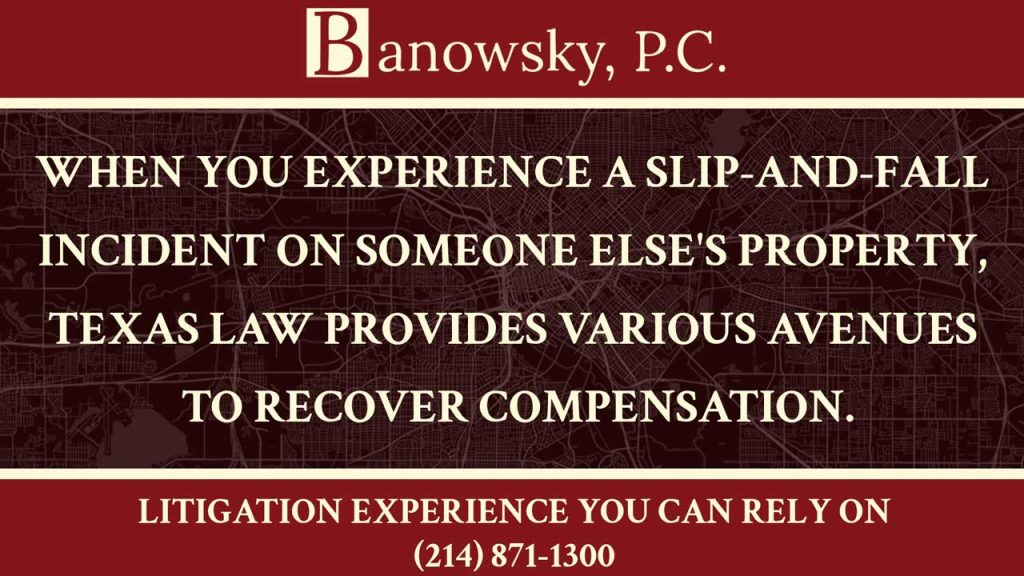
When you experience a slip-and-fall incident on else’s property, Texas law provides various avenues to recover compensation. A personal injury attorney works diligently to ensure accident victims receive damages for all aspects of their injuries and losses.
Comprehensive Medical Expenses and Treatment
Following a slip-and-fall accident, medical bills can quickly become overwhelming. The full scope of medical costs often includes:
- Emergency room visits and immediate medical attention
- Diagnostic tests and imaging
- Surgical procedures when necessary
- Ongoing rehabilitation and physical therapy
- Specialized medical treatment for severe injuries
- Mental health counseling and support
- Prescription medications and pain management
- Medical devices and adaptive equipment
- Future medical expenses related to long-term care
- Alternative therapy options when traditional treatments fail
Extended Income and Career Impact
A serious injury from a Dallas slip-and-fall accident often creates far-reaching financial consequences that extend well beyond immediate lost wages during recovery. When victims are unable to work while healing from their injuries, they face not only the loss of regular income but also potential reductions in earning capacity due to permanent limitations resulting from their injuries. These limitations can significantly impact their ability to perform job duties at the same level as before the accident, leading to reduced income potential over their entire career span.
Lost employment benefits and opportunities represent another significant area of financial impact, as injured individuals may miss chances for advancement or promotion during their recovery period. Future income losses due to disability or impairment must be carefully calculated to ensure fair compensation, taking into account the victim’s age, career field, and projected earnings trajectory. Job retraining or career transition costs often become necessary when injuries prevent victims from returning to their previous occupations, requiring significant investment in new skills or education. Self-employed individuals face particular challenges, as lost business opportunities during recovery can lead to long-term client losses and reduced market presence.
Future Impact
The impact on retirement benefits and savings can be substantial, as reduced income during recovery periods often leads to decreased retirement contributions and potential long-term financial security issues. Overtime and bonus compensation losses add another layer of financial burden, particularly for employees who regularly rely on these additional earnings. Missed professional development opportunities can significantly affect career advancement potential, while long-term career trajectory changes may force individuals to accept positions with lower earning potential or fewer advancement opportunities.
A slip and fall lawyer works diligently to ensure all these various aspects of income and career impact are thoroughly documented and included in compensation claims, fighting to secure the financial recovery that truly reflects the full scope of economic damages suffered by Dallas slip-and-fall accident victims.
Comprehensive Pain and Suffering Compensation After a Slip-and-Fall Accident
The physical pain and emotional trauma from fall injuries deserve thorough compensation. A slip-and-fall lawyer will help quantify damages for common injuries:
- Immediate and chronic pain
- Emotional distress and mental anguish
- Loss of enjoyment in daily activities
- Depression and anxiety resulting from injuries
- PTSD and trauma-related symptoms
- Impact on personal relationships
- Loss of consortium
- Reduced quality of life
- Sleep disturbances and fatigue
- Social and recreational limitations
Property Damage and Incidental Losses
When slip-and-fall accidents happen, personal property damage often occurs:
- Damaged clothing and accessories
- Broken electronic devices
- Personal medical equipment
- Valuable items carried during the fall
- Replacement costs for damaged items
- Transportation costs for medical visits
- Home modification expenses
- Additional living expenses during recovery
- Cleaning or repair costs for damaged items
- Rental costs for temporary medical equipment
Who Is Liable for a Slip-and-Fall Accident?

Determining liability in a slip-and-fall case requires careful investigation and legal expertise. A property owner has specific responsibilities under Texas law, and an experienced slip-and-fall accident attorney in Dallas thoroughly examines all liability aspects.
Comprehensive Responsibilities of a Property Owner
A property owner is responsible for maintaining safe premises, beginning with the fundamental requirement of conducting regular and documented property inspections. These inspections serve as the first line of defense against potential hazards and must be performed systematically and thoroughly, with detailed documentation of findings and actions taken. The prompt identification and repair of hazards discovered during these inspections represents a crucial aspect of property owner duties, as delays in addressing known dangers can lead to serious injuries and increased liability.
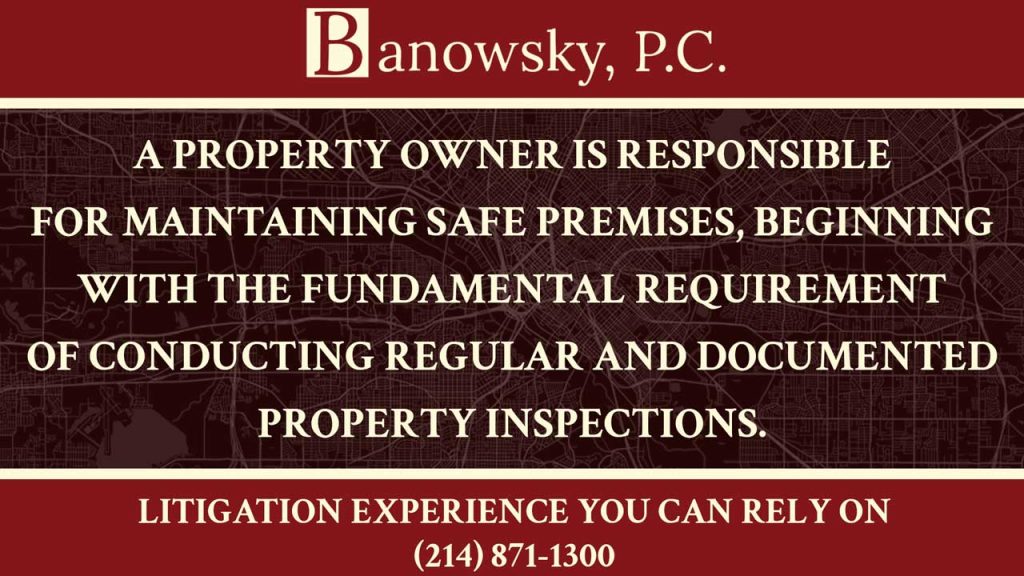
Clear warning systems for dangerous conditions must be implemented and maintained effectively, including proper signage, barriers, and other alert mechanisms that notify visitors of potential hazards. A property owner must ensure adequate lighting and security measures throughout their premises, particularly in high-traffic areas, stairwells, and parking facilities.
Strict compliance with building codes and regulations is non-negotiable, requiring the property owner to stay informed about current requirements and implement necessary updates or modifications to meet these standards. Staff training for hazard identification plays a vital role in maintaining safe premises, as employees often serve as the first line of defense in identifying and responding to dangerous conditions.
Implementing comprehensive maintenance schedules helps ensure regular upkeep of all areas, preventing many common hazards from developing. Emergency response procedures must be clearly established and communicated to all relevant personnel, ensuring swift and appropriate action when incidents occur. Thorough record-keeping of repairs and incidents provides crucial documentation for both prevention efforts and potential legal proceedings.
Regular safety audits and assessments round out these responsibilities, offering opportunities to identify systemic issues and implement improvements before slip-and-fall accidents occur. Property owners who fail to fulfill these comprehensive responsibilities may face significant liability when slip-and-fall accidents happen, particularly if evidence shows a pattern of negligence or inadequate attention to safety protocols.
Various Property Owner Categories
Different standards apply depending on where your fall occurred:
- Commercial property owners and managers
- Retail establishments and shopping centers
- Residential landlords and property managers
- Government property administrators
- Private homeowners and residents
- Business operators and lessees
- Educational institutions
- Healthcare facilities
- Entertainment venues
- Public spaces and parks
Establishing Property Owner’s Negligence
To prove the negligence of a property owner in your slip-and-fall case, a slip-and-fall attorney must demonstrate:
- The property owner knew about the dangerous condition
- The hazard existed for an unreasonable time
- Regular inspections would have revealed the danger
- Similar incidents had occurred previously
- Safety protocols were inadequate or ignored
- Warning signs were missing or insufficient
- Maintenance records show negligence
- Staff training was inadequate
- Safety measures were not implemented
- Required repairs were delayed or ignored
Understanding Comparative Negligence in Texas
Texas law carefully weighs comparative negligence in a premises liability claim, with the impact of shared responsibility playing a crucial role in determining final compensation amounts. When evaluating a slip-and-fall case, courts examine how each party’s actions contributed to the incident, potentially reducing compensation based on the percentage of fault assigned to each at-fault party.
Documentation of the victim’s reasonable care becomes essential in these cases, demonstrating that appropriate precautions were taken and that the fall occurred despite normal vigilance and attention to surroundings.
The analysis of warning sign visibility is a critical component of comparative negligence evaluation, as warning signs’ presence, placement, and clarity can significantly impact liability determination. Courts carefully consider factors such as the victim’s choice of footwear, poor lighting, and level of attention at the time of the incident, along with weather-related factors that might have contributed to the dangerous condition. Time of day and lighting conditions receive particular scrutiny, as these environmental factors can significantly affect a person’s ability to identify and avoid potential hazards.
The availability and feasibility of reasonable alternative routes often factor into negligence determinations, as courts examine whether the victim had safer options available but chose a more dangerous path. The victim’s awareness of surroundings and any prior knowledge of hazardous conditions can influence the assignment of fault to the at-fault party, particularly if evidence suggests the victim knowingly encountered a dangerous situation.
Courts also evaluate the specific activity taking place at the time of the incident, considering whether the victim’s actions were appropriate for the location and conditions. Understanding these various aspects of comparative negligence becomes crucial for victims of slip-and-fall accidents and their fall injury attorney when building a strong case for maximum compensation, as each factor can significantly impact the final settlement or verdict amount.
Time Limits on Filing a Slip-and-Fall Claim in Texas
Understanding and adhering to legal deadlines is crucial for your slip-and-fall lawsuit. The law in Texas sets specific timeframes for taking legal action.
Standard Deadline Requirements
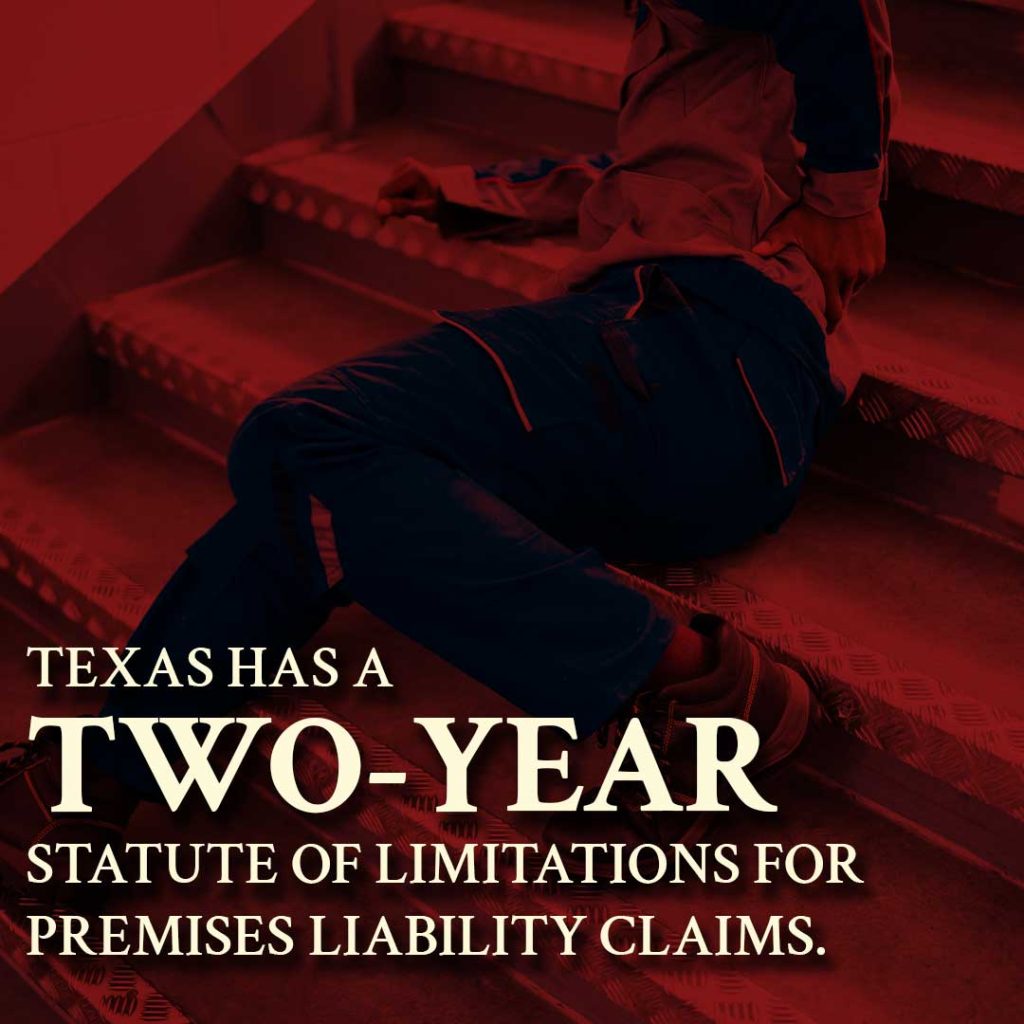
The Texas statute of limitations establishes crucial timing requirements for slip-and-fall cases, with the most fundamental being the two-year filing deadline from the date of the incident. This strict timeline serves as the primary framework within which all legal action must be initiated, making it essential for fall victims to understand and adhere to this deadline. Specific notice requirements for certain defendants add another layer of complexity, particularly when dealing with government entities or large corporations, each of which may have its own distinct notification protocols and timeframes.
Submission Deadlines
Documentation submission deadlines throughout the legal process require careful attention and prompt action. From initial medical records to expert reports, each piece of evidence must be properly submitted within prescribed timeframes to maintain the strength of your claim or slip-and-fall lawsuit. Insurance claim timing considerations also play a vital role, as insurers often impose their own deadlines for claim submission and supporting documentation. Appeal period limitations must be carefully monitored, as they determine how long you have to challenge unfavorable decisions or inadequate settlement offers.
The process involves multiple notice of claim requirements that must be met at various stages, ensuring all parties are properly informed of the legal action. Evidence preservation timeframes dictate how long certain types of evidence must be maintained and when they need to be presented to opposing parties. Witness statement collection periods must be carefully managed to ensure all testimonies are gathered while memories remain fresh and witnesses remain available.
Expert witness designation deadlines require timely identification and qualification of any expert witnesses who will support your case. Settlement negotiation windows also factor into the timeline, often requiring careful coordination to ensure productive discussions occur within appropriate legal timeframes. Understanding and managing these various deadlines requires experienced legal guidance to ensure no crucial timing requirements are missed.
Special Timing Considerations
Various factors can affect claim deadlines:
- Government entity involvement requires earlier notice
- Minor victims have extended filing deadlines
- Discovery rule applications for hidden injuries
- Tolling provisions for certain circumstances
- Multiple party involvement complications
- Out-of-state defendant considerations
- Insurance company notification requirements
- Medical treatment completion timing
- Permanent disability determinations
- Administrative claim requirements
Benefits of Early Legal Action
Taking prompt legal action after a Dallas slip-and-fall accident significantly strengthens your case, with the preservation of critical physical evidence being one of the most crucial advantages. Physical evidence can quickly disappear or change, whether through natural deterioration, repairs, or routine maintenance, making early documentation essential for establishing the exact conditions that led to your fall. Securing fresh witness testimonies also proves invaluable, as memories remain clearest immediately following an incident, allowing witnesses to provide more detailed and accurate accounts of what they observed.
Accurate documentation of the Dallas slip-and-fall accident conditions becomes significantly more challenging as time passes. Early legal intervention ensures that all relevant details are captured, from the specific location of hazards to lighting conditions and weather factors that may have contributed to your fall. Meeting all legal deadlines becomes much more manageable when you initiate legal action promptly.
This allows you to avoid potential complications from delayed filings or missed notification requirements. This proactive approach also maximizes your potential for full and fair compensation by allowing your legal team to build the strongest possible case from the outset.
Evidence Deteriorates Over Time
The natural deterioration of evidence over time can severely impact your case’s strength, making early action crucial for preserving all available proof of liability. Witness availability becomes increasingly uncertain as time passes, with people potentially relocating or becoming difficult to locate. Early legal intervention helps maintain your claim’s credibility by demonstrating your commitment to addressing the incident seriously and promptly.
The settlement process proceeds more efficiently when all evidence and documentation are gathered early. Insurance companies and opposing parties typically respond more favorably to well-documented claims. Most importantly, taking early legal action ensures your rights are effectively protected throughout the entire claims process. This prevents potential defense tactics that could weaken your position or reduce your compensation.

What to Do After a Slip-and-Fall Accident
Taking proper actions after a fall injury significantly impacts your ability to recover compensation for medical bills and other expenses. Our experienced slip-and-fall lawyer recommends specific steps to protect your rights.
Immediate Response Actions
- Seek immediate medical attention for injuries
- Report the incident on someone else’s property to management
- Document the accident scene thoroughly
- Gather witness contact information
- Preserve physical evidence carefully
- Photograph all relevant conditions
- Note weather conditions if applicable
- Record time and exact location
- Document any immediate symptoms
- Keep worn clothing and footwear
Comprehensive Medical Documentation
Proper medical documentation forms a crucial foundation for any successful personal injury claim, beginning with consistent attendance at all scheduled medical appointments. This demonstrates your commitment to recovery and establishes a clear record of your injuries’ severity and progression. Following prescribed treatment plans exactly as directed by healthcare providers not only supports your recovery but also strengthens your claim by showing you’ve taken all reasonable steps to improve your condition following the slip-and-fall incident.
Maintaining detailed records of your symptoms and their impact on daily life provides invaluable support for your slip-and-fall claim. This includes tracking all medical expenses, from emergency room visits to ongoing therapy sessions, creating a clear picture of the financial burden caused by your injuries. Documentation of your recovery progress, including both improvements and setbacks, helps demonstrate the full scope of your injuries and their long-term effects. Careful records of all medications, including prescriptions, dosages, and any side effects experienced, further support your claim by illustrating the extent of medical intervention required.
Your participation in therapy sessions, whether physical, occupational, or psychological, should be thoroughly documented. Include the frequency of sessions and progress notes from healthcare providers. Noting specific activity limitations caused by your injuries helps quantify how the Dallas slip-and-fall accident has affected your quality of life.
Tracking mental health impacts, such as anxiety, depression, or sleep disturbances, provides evidence of the accident’s psychological toll. Additionally, documenting work restrictions ordered by your healthcare providers establishes the economic impact of your injuries. Comprehensive medical documentation creates a strong foundation for your personal injury claim, ensuring you receive just compensation.
Common Causes of Slip-and-Fall Accidents
Our personal injury attorney handles diverse slip-and-fall accident cases involving various hazardous conditions. Understanding common causes helps prevent future incidents and establish liability.
Surface Condition Hazards

Surface-related hazards represent one of the most common causes of slip-and-fall accidents, with wet or slippery floor conditions leading the list of dangerous situations.
These hazards often develop when maintenance staff fail to properly clean up spills or when weather conditions bring moisture inside buildings. Property owners have a responsibility to promptly address these slippery conditions through appropriate cleaning protocols and warning systems to protect visitors from potential injuries.
Uneven walking surfaces and structural issues pose equally serious risks to pedestrian safety. Torn or loose carpeting can catch unsuspecting feet, while damaged floor tiles create unexpected tripping hazards that may not be immediately visible to visitors. Missing floor sections, whether from ongoing repairs or neglected maintenance, create particularly dangerous situations that can result in severe injuries. Recently waxed floors, while necessary for maintenance, require proper warning signage and temporary access restrictions to prevent slip-and-fall accidents.
Spilled substances in commercial settings, such as retail stores or restaurants, create immediate hazards that demand prompt attention. Weather-related hazards frequently affect both indoor and outdoor surfaces, requiring property owners to implement specific protocols for adverse conditions. Sudden surface material changes, such as transitions from carpet to tile or concrete to asphalt, need proper marking and maintenance to prevent falls. Floor level changes, including subtle variations in elevation or unexpected steps, must be clearly marked and properly maintained to ensure visitor safety. These surface condition hazards often form the basis of a premises liability claim when property owners fail to maintain safe walking conditions or provide adequate warnings about potentially dangerous areas.
Environmental Risk Factors
Environmental conditions frequently play a significant role in causing slip-and-fall accidents. Poor lighting in walkways is one of the most prevalent hazards. When property owners fail to maintain adequate illumination in corridors, stairwells, and common areas, visitors face increased risks. Weather-created hazards compound these risks. Rain, ice, and snow can transform normally safe walking surfaces into treacherous areas, particularly when property owners fail to take appropriate precautions.
Obstructed pathways present another serious environmental concern, often resulting from improperly stored materials, temporary construction work, or neglected maintenance issues. These obstacles become especially dangerous when combined with unmarked elevation changes. Unexpected steps or surface variations can catch pedestrians off guard. The absence of adequate warning signs in these areas further increases the risk of serious injuries, as visitors have no way to anticipate potential dangers ahead.
Natural and artificial lighting conditions can create additional hazards through window glare and shadow areas. Strong glare from windows can temporarily blind pedestrians, while abrupt transitions between bright and dark areas can disorient visitors before their eyes adjust to the change. Hidden obstacles, often concealed by these lighting variations or poor design choices, pose unexpected threats to unsuspecting visitors.
Natural obstacles, such as landscaping features or terrain variations, require careful management and clear marking to prevent fall accidents. Property owners have a responsibility to address these environmental risk factors through proper design, maintenance, and warning systems to ensure visitor safety.
Maintenance-Related Issues
Proper maintenance plays a crucial role in preventing fall accidents, yet many property owners fail to implement adequate maintenance protocols. One of the most common maintenance failures involves delayed spill cleanup, where hazardous conditions are left unaddressed for extended periods. This negligence often compounds with neglected floor repairs, creating increasingly dangerous situations for visitors and tenants. In winter months, improper snow removal becomes a particular concern, especially in parking lots and walkways where pedestrian traffic is high.
Damaged sidewalks represent another significant maintenance-related hazard, often developing over time due to weather exposure and regular wear. Poor drain maintenance can lead to water accumulation and unexpected slippery surfaces. Ignored repair requests from tenants or visitors often indicate a pattern of negligent property management. Regular cleaning protocols may be inadequate or inconsistently followed, leading to accumulated debris and hazardous conditions.
Many property owners engage in deferred maintenance practices, postponing necessary
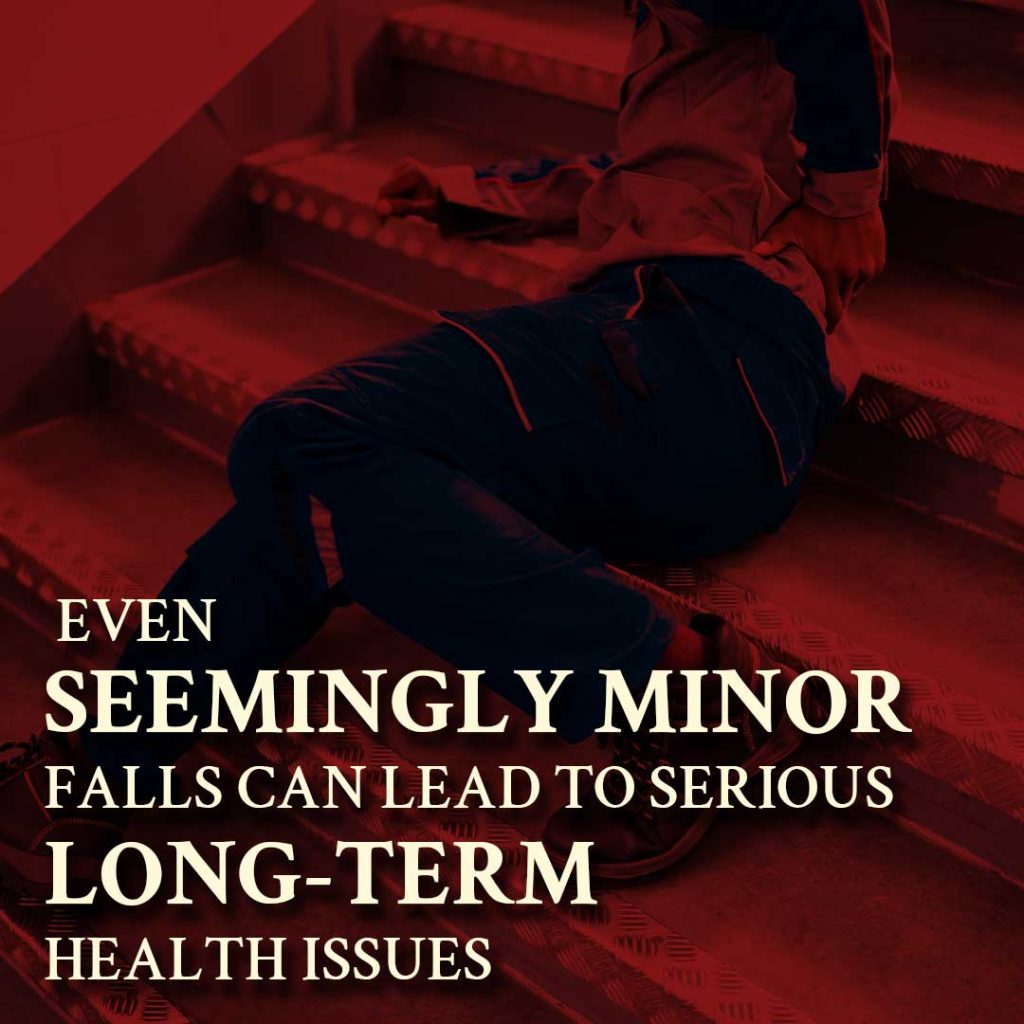
repairs due to budget constraints or poor planning. This can result in improper repair methods when fixes are finally attempted, often creating new hazards or failing to adequately address existing ones. Incomplete repairs pose their own risks, as partially fixed problems may appear safe while still harboring hidden dangers. These maintenance-related issues frequently form the basis for these claims when a fall injury happens, highlighting the importance of proper property maintenance in preventing serious injuries.
Common Injuries After a Slip-and-Fall
Fall accidents frequently result in severe injuries requiring extensive medical treatment. Understanding potential fall injuries helps victims seek appropriate care.
Head and Brain Injuries
Serious head injuries often occur in falls:

- Traumatic brain injury
- Concussions and contusions
- Skull fractures
- Face and jaw injuries
- Post-concussion syndrome
- Memory problems
- Balance issues
- Vision problems
- Speech difficulties
- Cognitive challenges
Orthopedic Injuries
Bone and joint injuries are common:
- Multiple broken bones
- Hip fractures
- Shoulder injuries
- Knee damage
- Ankle injuries
- Wrist fractures
- Elbow injuries
- Pelvic fractures
- Compression fractures
- Joint dislocations
Spinal and Nerve Injuries
Back and nerve damage can be severe:
- Spinal cord injuries
- Herniated discs
- Nerve compression
- Paralysis risks
- Chronic pain
- Muscle weakness
- Numbness
- Tingling sensations
- Limited mobility
- Long-term disability
Contact A Dallas Slip-and-Fall Accident Attorney
If you’ve experienced a slip-and-fall incident, don’t face the insurance companies alone. Ax Injury Law is ready to help you pursue maximum compensation for your fall injuries. We handle personal injury claims on a contingency fee basis, meaning you pay nothing unless we win your case.
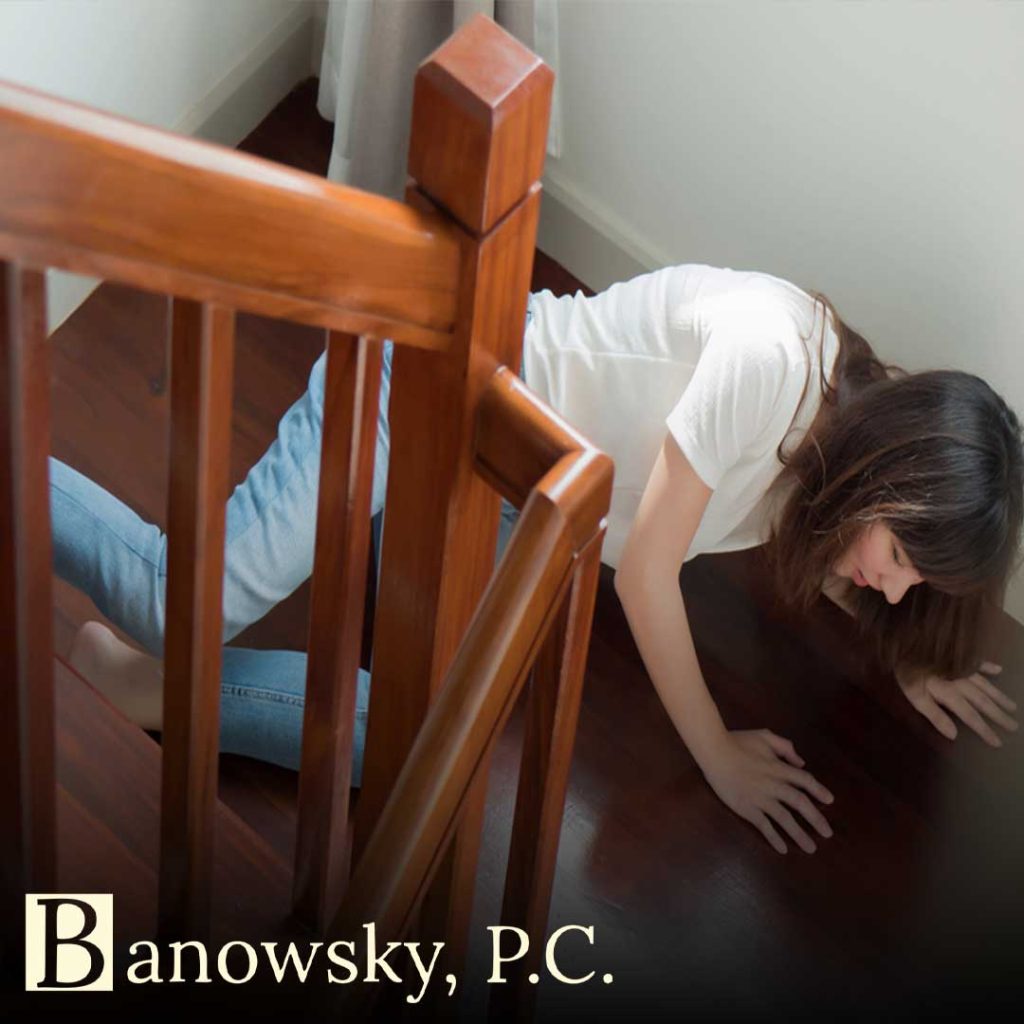
Our slip and fall accident team understands the complex nature of slip-and-fall accidents and work tirelessly to prove the property owner’s negligence in every case.
Our personal injury team serves clients throughout the Dallas area. We are committed to protecting the rights of injured parties through skilled legal representation.
Contact us to schedule a free consultation and to learn more about how we can help with your slip-and-fall claim. Whether you’ve suffered serious injuries on commercial property, government property, or private residence, each slip-and-fall lawyer on our dedicated legal team is here to help you recover the compensation you deserve.
Call us today at 844-344-HURT for a free consultation about your slip-and-fall accident case. Let an experienced slip-and-fall attorney fight for the fair compensation you deserve while you focus on healing.
